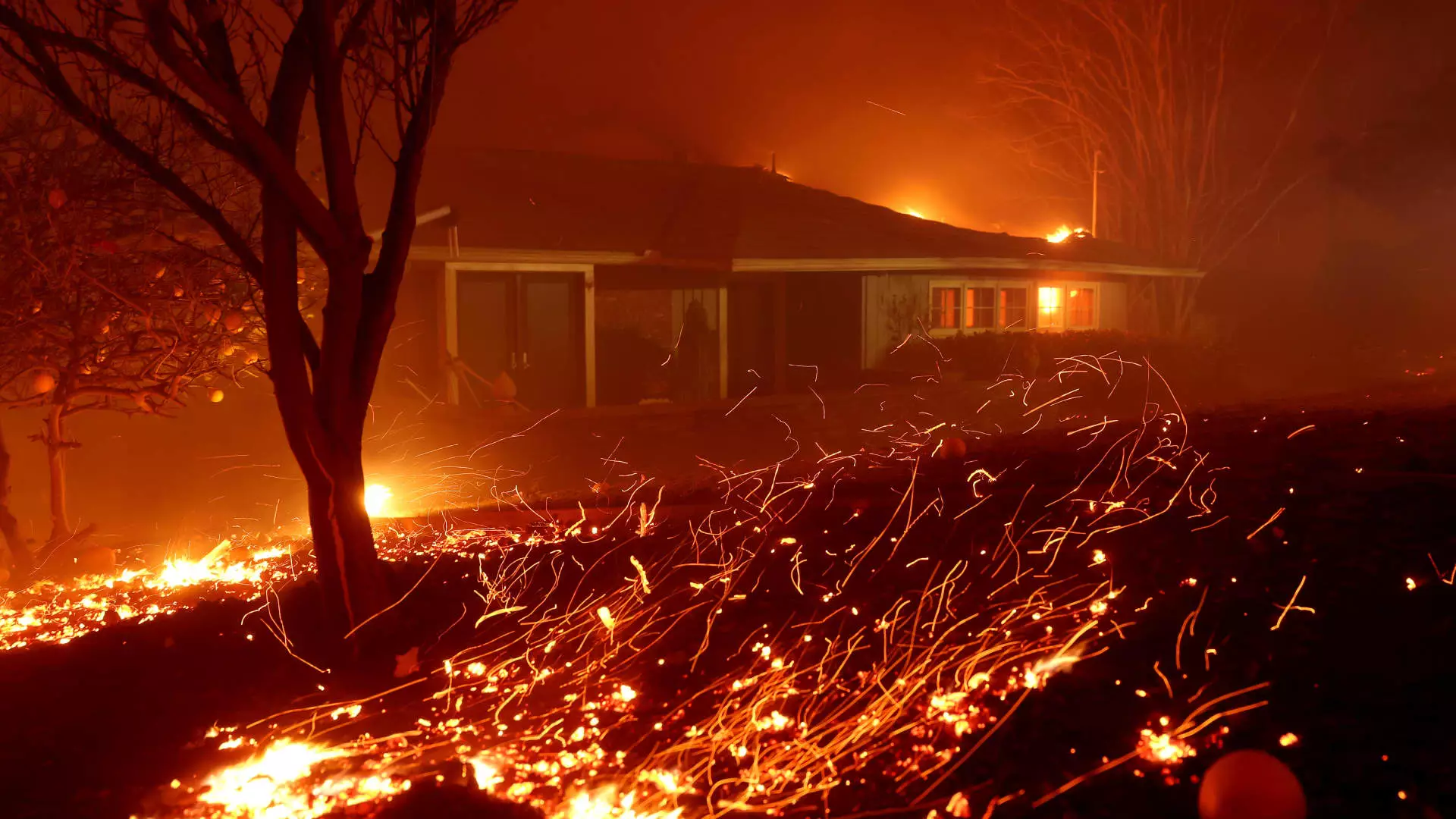The recent wildfires in Los Angeles have not only devastated communities but have also illuminated the overarching crisis of climate change impacting real estate values across the United States. While exact monetary figures are still unclear, the consensus among climate risk analysts is that the repercussions will be significant and far-reaching. The insurance market, in particular, stands to face dramatic shifts as it grapples with increasing claims and the merging effects of climate-related disasters. Insurers are forecasted to raise premiums nationwide, potentially seeing an average hike of 25% over the next three decades, a blend of underpricing risk and the intensification of climate events.
The framing of this situation reveals a deeper issue: how climate change has escalated from a theoretical concern to an undeniable reality with substantial financial implications. According to First Street, a notable climate-risk firm, projections indicate that by 2055, approximately 84% of U.S. homes could experience declines in value, summing a staggering loss of $1.47 trillion. This revelation is not merely an alarming statistic; it embodies the tangible threats that climate change poses to homeownership and economic stability.
The anticipated dip in property values, averaging around 3% nationally, signals a broader trend, one characterized by regional disparities. Areas particularly vulnerable to climate-related risks—including locales in Texas, Florida, and Louisiana—may see home values plummet to half their worth. Such unequally distributed risks serve as indicators of how climate change does not affect all communities equally, creating a patchwork of economic resilience and vulnerability.
Dave Burt, the founder of DeltaTerra Capital, underscores the urgency of this issue by suggesting that within the next five years, a minimum of 20% of U.S. homes could be adversely affected by the accumulating impacts of climate change. He draws correlations to the 2008 financial crisis, suggesting that the insurance industry’s re-evaluation of risk will lead to drastic drops in home values. Burt’s analysis foreshadows a market correction that could mirror the economic upheaval seen during the Great Recession, thus emphasizing the immediate need for stakeholders to reassess property investments and risk management strategies in the face of climate change.
The repercussions of increasing insurance premiums extend beyond individual homeowners and investors to the broader economic landscape. This is a sentiment echoed by Sen. Sheldon Whitehouse, who raises alarms regarding the potential of a major economic collapse stemming from the insurance sector. The intertwining of homeownership and insurance indicates a fragility within the housing market that could lead to widespread economic distress if not proactively managed.
Furthermore, the surging insurance rates might compel local governments to raise taxes to fund necessary resilience measures, essentially shifting the financial burden from private entities to the public. Such a paradigm poses additional hurdles for homebuyers and homeowners alike, limiting their financial flexibility and dampening the housing market’s overall viability.
In the wake of these challenges, companies like Fannie Mae and Freddie Mac are facing scrutiny regarding their handling of climate risks in underwriting practices. As the mortgage giant continues to refrain from integrating climate-related assessments into its property evaluations, the sector remains perilously exposed to the financial fallout of climate change. The disconnect between current market practices and the rising significance of climate risk could lead to gaping vulnerabilities in the mortgage market, prompting foreclosures and market instability.
As climate-related disasters become increasingly prevalent, experts agree that real estate assets will need to establish a new equilibrium to ensure market stability. The correlation between foreclosures and extreme weather—as seen post-Hurricane Sandy and extensive flooding events—indicates that a similar trajectory could unfold in the coming years, prompting investors to strategize with foresight.
In light of this turmoil, Burt advocates for innovative hedging strategies to safeguard investments against climate-related financial decline. By identifying at-risk securities and employing mortgage credit derivatives, investors can mitigate some of the anticipated shocks to their portfolios.
Ultimately, the housing market stands at a precipice, where short-sightedness in taking climate risk seriously could have devastating consequences for homeowners and investors alike. The ongoing volatility of the insurance market signals that the time for decisive action—both at the personal investment level and in broader policy measures—is rapidly approaching. The interplay between climate change, insurance pricing, and real estate value will undoubtedly shape the future of homeownership across the United States.

